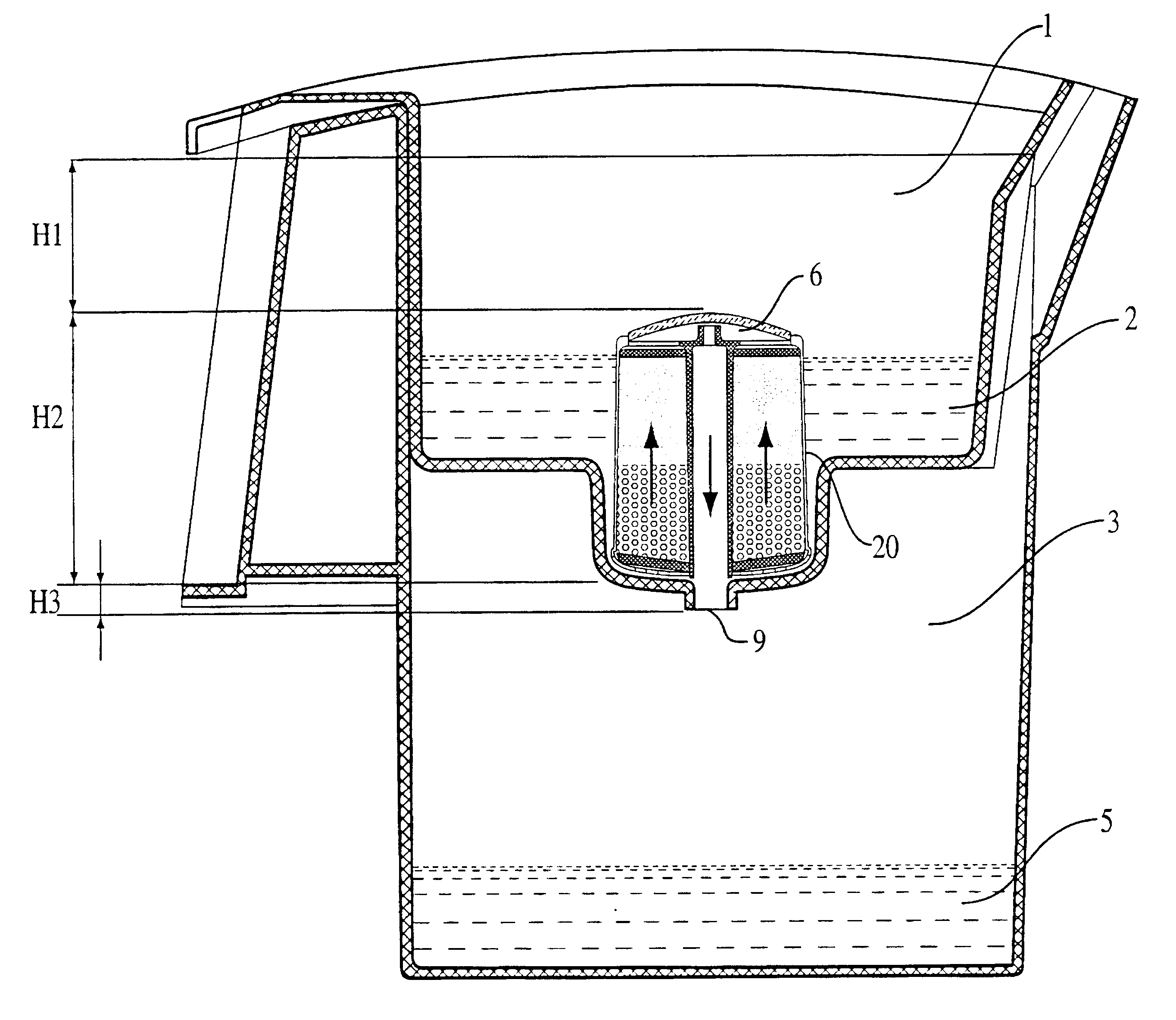Filtration device for liquid purification
a filtration device and liquid purification technology, applied in the direction of filtration separation, separation process, treatment involving filtration, etc., can solve the problems of significantly reducing the filtration capacity of the filter, visual control of the work of the filter, and insufficient resistance of the filter to the liquid flow, so as to confirm the effect of the invention
- Summary
- Abstract
- Description
- Claims
- Application Information
AI Technical Summary
Benefits of technology
Problems solved by technology
Method used
Image
Examples
example 1
There are compared two water filters with the identical interval volumes. Each filter contains 90 ml of the adsorbing carbon material. This adsorbing carbon material comprises AQUALEN activated carbon fiber (manufactured by Aquaphor Corporation, St. Petersburg, Russia) and granular activated carbon G55C-8 (manufactured by PICA Corp., USA) in a weight by weight ratio of 1:7 (4.8 g of Aqualen, dry weight, and 33 g of granular carbon). In one of the filters the water flows downwardly (as in the prior art) and in the second filter water flows in an upward direction according to the present invention. The time to flow 1 liter of liquid is 15 minutes. Phenol solution with a concentration of 10 mg / L was used as the test solution. The comparison results are shown in Table No. 1.
example 2
The experimental conditions are the same as in Example 1 except that a solution containing E. Coli index 100 (100 E. Coli bacteria per 1 liter) was used. Results of the experiment are shown in Table No. 1.
example 3
The experimental conditions are the same as in Example 1 except that a cation-exchange resin SR-10 (manufactured by SYBRON Corp., USA) in the amount of 90 grams was used. The time for flowing 1 liter of liquid was 4 minutes 3 seconds. Copper solution (10 mg / g) is used as a model Solution. Experimental results are shown in Table No. 1.
PUM
| Property | Measurement | Unit |
|---|---|---|
| Fraction | aaaaa | aaaaa |
| Density | aaaaa | aaaaa |
| Density | aaaaa | aaaaa |
Abstract
Description
Claims
Application Information
 Login to View More
Login to View More - R&D
- Intellectual Property
- Life Sciences
- Materials
- Tech Scout
- Unparalleled Data Quality
- Higher Quality Content
- 60% Fewer Hallucinations
Browse by: Latest US Patents, China's latest patents, Technical Efficacy Thesaurus, Application Domain, Technology Topic, Popular Technical Reports.
© 2025 PatSnap. All rights reserved.Legal|Privacy policy|Modern Slavery Act Transparency Statement|Sitemap|About US| Contact US: help@patsnap.com



